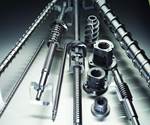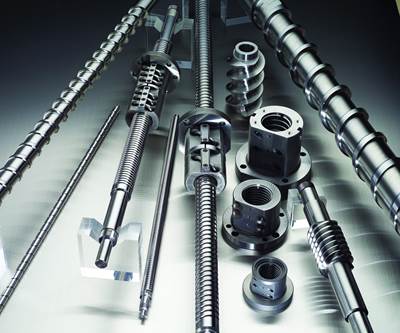Using Nontraditional Technology
MoldMaking Technology editorial advisory board (EAB) member Gabe Meldrum of CIE Century Plastics Inc. shares his take on finding and using new technologies to grow a business, such as waterjets and additive manufacturing.
Gabe Meldrum, MMT EAB member and a plant manager at CIE Century Plastics Inc., shares one of his top priorities: finding new and better ways of doing things. Gabe has been very involved with researching new or nontraditional technologies and processes to help the company grow.
If you are still making molds as you did 10 years ago, your shop is going to find it hard to compete. New and different approaches to manufacturing are vital for growth. Finding the appropriate technology is the first step. The ultimate considerations are speed and cost. Is this new process or technology faster? Is it less expensive? Answering those questions requires research and a deep dive into the specifics of a new product, process or piece of equipment. It also requires sharing that information with coworkers to gain their buy-in. The next step is determining the best way to implement that process or technology into the current way of doing things.
If you are still making molds as you did 10 years ago, your shop is going to find it hard to compete.
For example, IMC’s waterjet process. It all started with a revelation that there must be a faster and better way to manufacture 2D components. Machinists were spending a lot of time on the CNC machines cutting 2D shapes with very generous tolerances, instead of cutting 3D contours on these large expensive mills. As an alternative, the company decided to outsource flame-cutting or burnouts. However, when the workpiece returned to the shop, it had a very hard, nasty scale left behind from the flame, which needed to be machined off anyway. This made the process expensive and slow. IMC then investigated and invested in a waterjet machine, which is faster, provides a clean, straight finish and does not add extra stress on the material being cut. Plus, with a waterjet, a shop can keep the slug (or scrap) and reuse it rather than recycling chips from a mill. Today, IMC continues to find ways to use its waterjet machine.
Another nontraditional process worth investigating is additive manufacturing. This technology is on the rise and will eventually make its way into every mold shop. CNC toolpaths and CAD are other great examples, which have the support of software developers who spend a lot of time and money to make processes faster and better. (A note of caution: if you are not paying the software maintenance fee and using the advancements as they come out, you will be left behind.) Cutting tools also are evolving as new coatings and geometries are developed to improve performance.
The key to finding a new or nontraditional technology is maintaining an open mind, involving the team by asking questions and not dismissing an idea because of the person who offered it (even a floor sweeper can have a great idea). Never stop improving. Once you think you are the best or that there is nothing better you could be doing, your neighbor will come by and eat your lunch.
Once you think you are the best or that there is nothing better you could be doing, your neighbor will come by and eat your lunch.
Related Content
Mold Building Stats Improve Performance
Mold manufacturing is a numbers game rooted in measurement and data tracking to continuously improve.
Read MoreThe Mold Specification Document, Part 3 of 4
The mold specification document is essential for injection molding success, connecting design requirements with manufacturing processes and quality control standards.
Read MoreDynamic Tool Corporation – Creating the Team to Move Moldmaking Into the Future
For 40+ years, Dynamic Tool Corp. has offered precision tooling, emphasizing education, mentoring and innovation. The company is committed to excellence, integrity, safety and customer service, as well as inspiring growth and quality in manufacturing.
Read MoreMMT Chats: Solving Schedule and Capacity Challenges With ERP
For this MMT Chat, my guests hail from Omega Tool of Menomonee Falls, Wisconsin, who share their journey with using enterprise resource planning (ERP)—and their people—to solve their schedule and capacity load monitoring challenges.
Read MoreRead Next
Ballscrew Inspection Considerations
Ballscrews must be inspected for diameter, pitch, lead angle and potential drunkenness to avoid wear and to achieve the necessary tolerances and surface finishes in mold work.
Read MoreHow to Use Strategic Planning Tools, Data to Manage the Human Side of Business
Q&A with Marion Wells, MMT EAB member and founder of Human Asset Management.
Read MoreHow to Use Continuing Education to Remain Competitive in Moldmaking
Continued training helps moldmakers make tooling decisions and properly use the latest cutting tool to efficiently machine high-quality molds.
Read More.png;maxWidth=728;quality=90)




-02.jpg;maxWidth=300;quality=90)

















.png;maxWidth=970;quality=90)